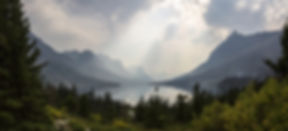

Call Us Now!
406-261-8865
Tall Buttercup




Tall Buttercup
(Ranunculus acris)
Common Names:
Blister Plant, Butter Flower, Butterrose, Common Buttercup, Crazy Weed, Field Buttercup, Gold Cup, Meadow Buttercup, Tall Crowfoot, Tall Field Buttercup, Upright Meadow Crowfoot.
Description:
Tall buttercup is a perennial that resembles the native buttercup, but grows much taller in height. Long erect stems can be from one to three feet in height and emerge from short, thick rootstocks. Stems are hollow and hairy and often branched near the top of the plant. Leaves of tall buttercup are palmately divided. Lower leaves have long petioles and are hairy on all surfaces. Upper leaves are smaller, farther apart and usually three lobed. Flowers are bright yellow with five rounded petals and have a glossy appearance. Each flower produces yellowish, egg-shaped, flat seeds with a short, tipped hook on the ends. Tall buttercup is toxic to livestock while on the stem.
Key Features:
One inch, bright yellow flowers look as if they have been dipped in shellac; long, erect, hairy stems; palmately-divided, hairy leaves.
Habitat:
Tall Buttercup can be found in a variety of habitats, but prefers heavy, moist soils including wet lowlands and rich woodlands. If it has enough moisture, it will also grow in sandy or gravelly soils. It is a common weed in pastures, meadows, open areas, and along roadsides. It usually does not persist in cultivated fields. Infestations will decrease greatly in very dry years, but rebound and expand in wet years.
Currently found in the following counties:
Beaverhead, Flathead, Gallatin, Jefferson, Lake, Madison, Mineral, Missoula, Powell, Ravalli, Sanders, Sweet Grass, Yellowstone
IWM
-
Herbicide
-
Hand Pulling
Interesting Facts:
Tall buttercup is very difficult to control in grass hayfields; when herbicides are applied, many broadleaf plants, including clover, are destroyed. While buttercup is toxic on the stem, it produces a highly unpalatable juice and is not readily eaten by animals. It is not toxic when cured and baled in hay.
Commonly Confused Plants:
-
Other buttercup species
Photo Credits: Brian Ostwald; Montana Statewide Noxious Weed Awareness and Education Program Archive, Montana State University, www.bugwood.org; John Cardina, The Ohio State University, www.bugwood.org